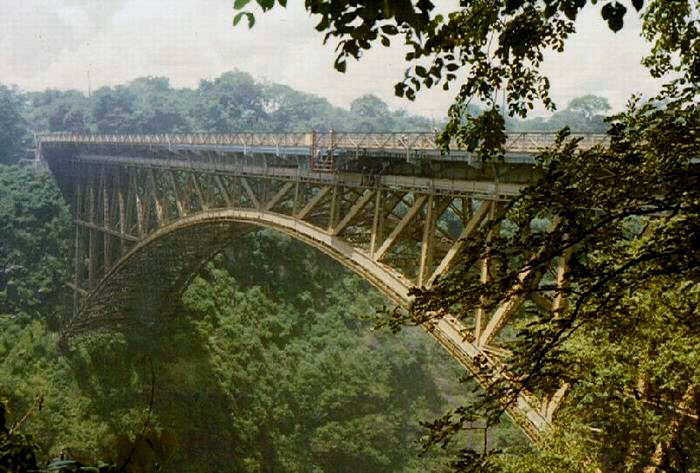George Andrew Hobson on:
[Wikipedia]
[Google]
[Amazon]
 George Andrew Hobson (29 March 1854 – 25 January 1917) was a British civil engineer known for the development of the patented Hobson steel flooring and the design of the
George Andrew Hobson (29 March 1854 – 25 January 1917) was a British civil engineer known for the development of the patented Hobson steel flooring and the design of the
Details of grave
{{DEFAULTSORT:Hobson, George Andrew 1854 births 1917 deaths People from Leeds British bridge engineers Engineers from Yorkshire
 George Andrew Hobson (29 March 1854 – 25 January 1917) was a British civil engineer known for the development of the patented Hobson steel flooring and the design of the
George Andrew Hobson (29 March 1854 – 25 January 1917) was a British civil engineer known for the development of the patented Hobson steel flooring and the design of the Victoria Falls Bridge
The Victoria Falls Bridge crosses the Zambezi River just below the Victoria Falls and is built over the Second Gorge of the falls. As the river forms the border between Zimbabwe and Zambia, the bridge links the two countries and has border post ...
.
He was born in Leeds, Yorkshire and educated at King James's School, Knaresborough
King James's School is located on King James Road, Knaresborough, North Yorkshire, England. King James's is a large non-selective school with a large sixth form.
Admissions
King James's School is the only secondary school in Knaresborough and ...
and Watt Institution in Edinburgh. From 1871 he was an apprentice with Messrs Hopkins, Gilkes and Co., locomotive builders in Middlesbrough, then in Yorkshire. He then worked for the Teesside Bridge and Engineering Company (later part of Dorman Long) for several years.
In 1880 he moved to be Chief Assistant to Sir Charles Fox of Sir Charles Fox & Sons (later Freeman Fox & Partners; today part of Hyder Consulting
Hyder Consulting was a multi-national advisory and design consultancy with particular specialisation in the transport, property, utilities and environmental sectors. The firm employed approximately 4,200 people across the UK, Europe, Germany, Midd ...
). There he was involved in a number of civil engineering projects such as the Mersey Tunnel
The Mersey Tunnels connect the city of Liverpool with Wirral, under the River Mersey. There are three tunnels: the Mersey Railway Tunnel (opened 1886), and two road tunnels, the Queensway Tunnel (opened 1934) and the Kingsway Tunnel (opened 1 ...
, the Liverpool Overhead Railway
The Liverpool Overhead Railway (known locally as the Dockers' Umbrella or Ovee) was an overhead railway in Liverpool which operated along the Liverpool Docks and opened in 1893 with lightweight electric multiple units. The railway had a number ...
and the extension of the Great Central Railway
The Great Central Railway in England was formed when the Manchester, Sheffield and Lincolnshire Railway changed its name in 1897, anticipating the opening in 1899 of its London Extension. On 1 January 1923, the company was grouped into the ...
to London. For the overhead railway, he designed and patented a new design of steel flooring capable of carrying heavy loads. Jointly with Edmund Wragge, he was awarded a Telford Medal
The Telford Medal is a prize awarded by the British Institution of Civil Engineers (ICE) for a paper or series of papers. It was introduced in 1835 following a bequest made by Thomas Telford, the ICE's first president. It can be awarded in gold ...
in 1900 for their paper entitled ''The Metropolitan Terminus of the Great Central Railway''. He was made a partner in the company in 1901.
His chief work thereafter was the construction of railways in Africa and South America, of which his most notable achievement was the design of the Victoria Falls Bridge
The Victoria Falls Bridge crosses the Zambezi River just below the Victoria Falls and is built over the Second Gorge of the falls. As the river forms the border between Zimbabwe and Zambia, the bridge links the two countries and has border post ...
. On this project, he was assisted in the stress calculations by Ralph Freeman, who went on to design the Sydney Harbour Bridge
The Sydney Harbour Bridge is a steel through arch bridge in Sydney, spanning Port Jackson, Sydney Harbour from the Sydney central business district, central business district (CBD) to the North Shore (Sydney), North Shore. The view of the bridg ...
. The location of the railway bridge was chosen by Cecil Rhodes to give rail passengers a clear view of the falls and presented a number of engineering challenges such as the need for a design and construction technique which avoided the use of scaffolding and the need for the structure to be spray resistant. The final solution was the 150 metre trussed steel arch which stands today. He was awarded the George Stephenson Gold Medal by the Institute of Civil Engineers for his account of the design and construction of the bridge.
He died in Richmond, Surrey in 1917 and was buried in Richmond Cemetery. He had married Annie Jean, the daughter of Thomas Addyman of Harrogate and had an only daughter.
References
External links
Details of grave
{{DEFAULTSORT:Hobson, George Andrew 1854 births 1917 deaths People from Leeds British bridge engineers Engineers from Yorkshire